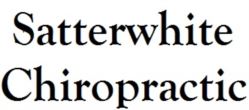Understanding the Science Behind Oxford Disc Degeneration Prediction
For individuals who suffer with back or spine pain, knowing the mechanisms of disc degeneration (a common cause of discomfort) can be both insightful and empowering. While disc degeneration is often thought of as a progressive (and even unavoidable) aging process, new research has shed light on predictive factors, early indicators, and the influencing elements once it starts. Satterwhite Chiropractic gets this and is here to help our Oxford chiropractic patients!
FACTORS AFFECTING LUMBAR SPINE INTRADISCAL PRESSURE
Intriguingly, the pressure within intervertebral spinal discs possesses a key role in their health. According to a study by Liebsch and Wilke (1), factors such as age, direction of motion, and the present status of degeneration significantly influence intradiscal pressure. This pressure imbalance can disrupt the disc's internal environment, affecting its ability to absorb shock and keep structural integrity. Appreciating these conditions permits practical adjustments. For instance, altering movement mechanics or posture could diminish excessive strain on the lumbar discs, potentially reducing the risk of damage. A goal of our Oxford chiropractic care!
EARLY CHANGES BEFORE DISC DEGENERATION
Research led by Rajasekaran et al. (2) has revealed that cartilage endplate faults often precede visible disc degeneration. These micro-changes in the disc structure may initiate inflammation or hinder its ability to bring nutrients, leaving it vulnerable to future damage. The study also created the “Integrated Total End Plate Score” to identify at-risk discs sooner, offering hope for timelier intervention and prevention. This finding emphasizes the value of a proactive approach. Regular Oxford chiropractic care and imaging (if needed) for high-risk individuals can find issues before degeneration gets bad.
PROGRESSION OF DEGENERATION
Once disc degeneration begins, its development is multifaceted. Tsuchiya et al. (3) point out that reduced nucleus pulposus signal intensity is a fundamental sign of worsening degeneration. Further, the loss of hydration and structural degradation puts the disc at risk of being less capable of handling stress, especially during repetitive movements or high-impact motions. Adopting low-impact exercises, keeping a healthy weight, and seeing your chiropractor at Satterwhite Chiropractic may slow this progress and improve overall spinal health.
BRIDGING RESEARCH AND RELIEF
CONTACT Satterwhite Chiropractic
By understanding the underlying factors and making regular visits to the chiropractor, Oxford back pain sufferers can take proactive measures to safeguard their spine health and its discs. If you or a loved one has Oxford back pain or discomfort, consult with your Oxford chiropractor at Satterwhite Chiropractic.
Listen to this PODCAST with Dr. James Cox on The Back Doctors Podcast with Dr. Michael Johnson as he describes disc degeneration, its evolution and its relief and care with The Cox® Technic System of Spinal Pain Management.
Schedule your Oxford chiropractic appointment now to see us!

